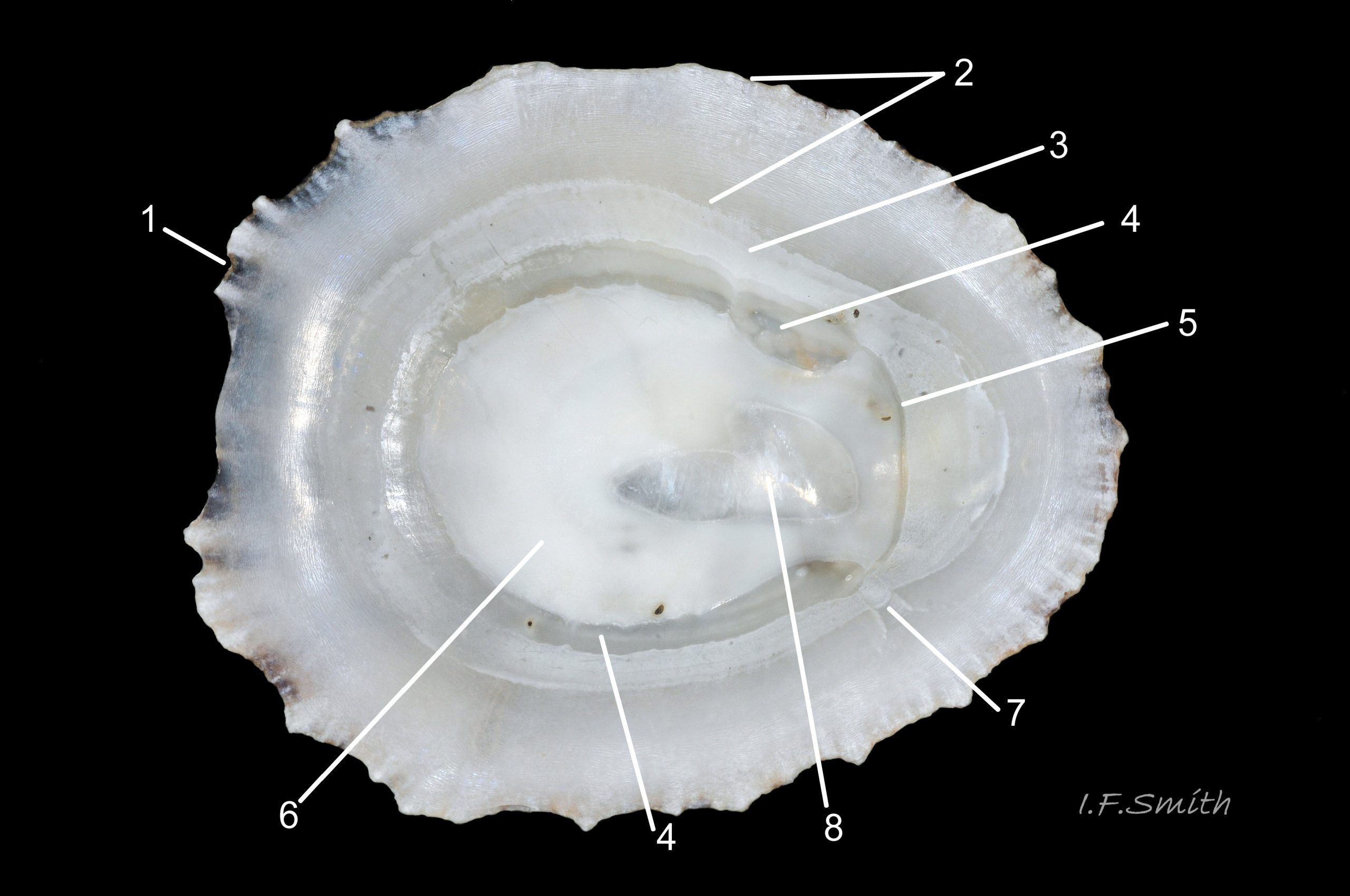Specimen at usual maximum shell-length for P. ulyssiponensis.
On this form, well-developed, thick, porcellaneous interior layers conceal outer shell so “marginal rays are never conspicuous” internally (Fretter and Graham, 1994), and features defined by differences of reflectivity resulting from differences in crystal-form of shell-material made by different parts of mantle are clearly visible.
1: aperture rim, minute (or absent) part of pigmented exterior shell-layer; secreted by mantle-edge.
2: wide peripheral “skirt layer” that reflects light, often iridescing blue, from many short crystalline lines parallel to rim; secreted by mantle-skirt.
3: narrower, matt, opaque, “pallial groove-band”; secreted by mantle roofing groove that contains the gills.
4: translucent, horseshoe-shape “pedal-retractor muscle scar”; mark left by muscle attachment.
5: very thin “anterior mantle-attachment scar” connecting ends of pedal-retractor scar; mark left by mantle attachment.
6: central “amphora area” enclosed by scars 4 & 5; secreted by mantle over visceral hump.
7: short mark across pallial groove-band where efferent pallial vessel enters nuchal cavity through gap in pallial gills.
8: excavated vertex patch; occurs more frequently in P. depressa than in P. ulyssiponensis, but, in this case, in the form of two adjoining elliptical pits. Cause unknown; but, as shape regular and consistent, damage by parasite/inquiline suspected. Similar pits on image Pu14 14 Patella ulyssiponensis. Lengths 28.1mm, 39.5mm & 44.5mm. Lleyn. Wales. October 2015. .
OTHER SPECIES ALBUMS
marinvert.senckenberg.science/image-browse/

